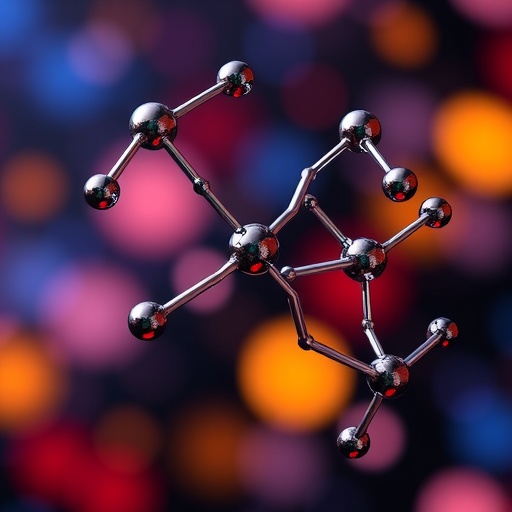In the intricate world of organic synthesis, ketones occupy a central and ubiquitous role, making their chemical transformation a topic of longstanding interest among chemists. Particularly, the generation of ketyl radicals—highly reactive intermediates formed via the one-electron reduction of ketones—has been a subject of both academic and practical significance. These radicals serve as powerful tools for forging new bonds in complex molecular architectures, especially in the synthesis of natural products and pharmaceuticals. While methodologies to induce such radical species have been well-established for aryl ketones, the more abundant alkyl ketones have remained elusive targets due to their inherent chemical properties. Recently, a groundbreaking approach has emerged from WPI-ICReDD at Hokkaido University, providing a novel catalytic solution to generate alkyl ketyl radicals efficiently via photoexcited palladium catalysis, marking a significant leap forward in this field.
Unlike aryl ketones, which have conjugated systems facilitating their reduction, alkyl ketones pose a more formidable challenge. Their electronic structure resists facile one-electron reduction, complicating attempts to generate corresponding ketyl radicals. Traditional palladium catalysts, while effective for photochemical transformation of aryl ketones, failed to translate this success to alkyl ketones. The failure was not due to the absence of ketyl radical formation but rather the rapid deactivation of radicals via back electron transfer (BET) to the palladium center. This unproductive electron cycling thwarted the progression of subsequent radical reactions, essentially halting any chemical transformation.
Recognizing the critical role of phosphine ligands in modulating palladium catalysis, the researchers hypothesized that fine-tuning the ligand environment could suppress BET and unlock the reactivity of alkyl ketones. Phosphine ligands influence both the electronic and steric properties of the metal center, altering the energetic landscape of catalytic cycles. However, the vast chemical space encompassing thousands of known phosphine ligands renders experimental screening inefficient, resource-intensive, and environmentally taxing. Conducting exhaustive trials would produce excessive chemical waste and demand considerable manpower, impeding swift progress.
To circumvent these challenges, the research team leveraged advanced computational chemistry techniques, specifically the Virtual Ligand-Assisted Screening (VLAS) method pioneered by Associate Professor Wataru Matsuoka and Professor Satoshi Maeda. This approach integrates molecular simulations with predictive modeling, facilitating a rational selection of ligands by assessing their electronic and steric impacts on catalytic performance. Utilizing VLAS, the team generated a detailed heat map across 38 diverse phosphine ligands, visually representing which molecular variants were most likely to enable productive ketyl radical formation from alkyl ketones.
The computational insights proved transformative. By narrowing down to three candidate ligands from the heat map predictions, the research team conducted targeted experiments that identified tris(4-methoxyphenyl)phosphine (P(p-OMe-C₆H₄)₃), referred to as L4, as the optimal ligand. L4 uniquely balanced electron-donating capacity and steric bulk to effectively suppress the detrimental BET pathway. This breakthrough permitted the stable formation and subsequent reactions of alkyl ketyl radicals, enabling a vast array of synthetic transformations with unprecedented yields.
The ramifications of this discovery extend beyond a single reaction class. It exemplifies how combining computational screening with tailored catalysis can surmount chemical hurdles traditionally deemed intractable. The ability to efficiently generate alkyl ketyl radicals opens doors to novel synthetic strategies, impacting drug discovery, materials science, and complex molecule construction. Moreover, the environmentally conscious approach of minimizing experimental trials aligns with the growing emphasis on sustainable chemistry, minimizing chemical waste and resource consumption.
This advancement is a testament to interdisciplinary collaboration, blending theoretical calculations with synthetic experimentation to reshuffle the boundaries of reactivity. The strategic integration of VLAS not only accelerated ligand discovery but also deepened the mechanistic understanding of photoactivated palladium catalysis. By addressing the electronic intricacies responsible for BET, the researchers were able to harness light energy to drive radical generation in previously unreactive substrates.
Palladium, as a versatile transition metal catalyst, has dominated many synthetic methodologies due to its rich redox chemistry and coordination flexibility. Photoexcited palladium catalysis adds a dimension of temporal control by activating the catalytic cycle with light, thereby enhancing selectivity and reducing side reactions. However, this methodology still hinges critically on the molecular design of ligands that tune the metal’s reactivity. Through computationally guided design, this work delineates a path for future catalyst development efforts targeting challenging substrates.
In sum, this innovative photoinduced palladium-catalyzed method, empowered by computational ligand screening, addresses a longstanding challenge in synthetic organic chemistry—the direct generation of alkyl ketyl radicals. It not only enlarges the synthetic toolbox for organic chemists but also highlights a paradigm shift towards integrating computational strategies into catalyst design. Such approaches will likely proliferate, hastening discoveries across chemical disciplines and fostering more efficient, sustainable synthesis protocols on a global scale.
Subject of Research: Not applicable
Article Title: Virtual Ligand-Assisted Screening for the Generation of Ketyl Radicals from Alkyl Ketones via Photoexcited Palladium Catalysis
News Publication Date: 20-Oct-2025
Web References: http://dx.doi.org/10.1021/jacs.5c13115
Image Credits: WPI-ICReDD, Hokkaido University
Keywords
– Computational chemistry
– Chemical engineering




